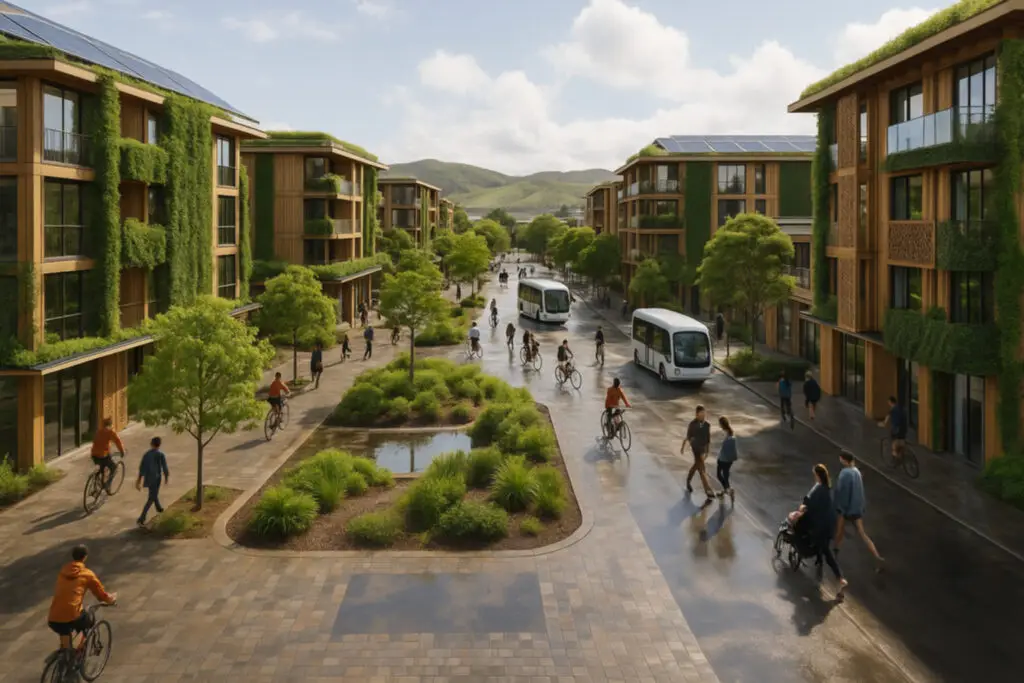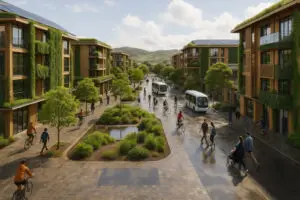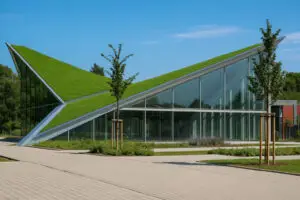Better-Cities Healthier Communities Tech

Technical Review – Better Cities, Healthier Communities
Better Cities Healthier Communities Tech now defines best practice in Western urban planning. The phrase captures a measurable goal: align land-use, mobility, and public space policies with population health, equity, and sustainability indicators.
Health-Promoting Infrastructure
Cities increasingly treat transport corridors, parks, and housing codes as public-health interventions. The World Health Organization urges “connected, compact neighborhoods” that invite walking and cycling while guaranteeing access to nature and transit WHO. Evidence shows effective design saves lives. For example, cycling culture in the Netherlands prevents an estimated 6 400 deaths yearly and adds six months to average life expectancy C40 Cities.
- Protected bike lanes reduce crash risk and pollution exposure.
- Pocket parks and street trees cool heat-islands and improve air quality.
- Well-ventilated, affordable housing cuts respiratory illness.
Barcelona’s Super blocks illustrate impact. Traffic calming lowered nitrogen dioxide by 25 % and fine particulates by 17 %, while resident surveys record better sleep and more social interaction.
Inclusive and Cultural Design Better-Cities Healthier Communities Tech
Infrastructure alone cannot guarantee livability. Vienna’s gender-responsive planning shows why social-space analysis matters: brighter lighting, wider sidewalks, and plentiful benches encourage safe use by women, children, and older adults. Mixed-income housing and community plazas foster routine encounters among neighbors, strengthening trust and cohesion. The World Health Organization frames this as a “right to health” within urban environments, urging socially inclusive places for all abilities and ages.
Successful strategies share three traits:
- Early engagement of under-represented groups through workshops and digital surveys.
- Iterative co-design, allowing residents to test pilot spaces before full roll out.
- Transparent monitoring via public dashboards to track health and equity metrics.
Governance, Funding, and Metrics
Better-Cities Healthier Communities Tech Delivering healthier cities demands cross-sector governance. Many municipalities now apply a “Health in All Policies” filter: planners consult epidemiologists, while transport agencies partner with environmental-justice NGOs. Zoning reform is pivotal. Minneapolis’s 2020 decision to eliminate single-family-only zones aims to expand housing supply and undo historic inequities. Financing follows suit. Public-private partnerships fund transit lines; participatory budgeting allocates local improvement funds; global philanthropies support pilot projects.
Digital tools raise accountability. Live dashboards such as the Australian Urban Observatory’s index map real-time access to parks, transit, and amenities. Digital twins let planners model flood defenses or new tram routes before construction, reducing risk and improving public communication. Artificial-intelligence platforms already summaries thousands of citizen comments into actionable insights, accelerating inclusive decision-making while respecting democratic norms.
Next Steps
Western case studies demonstrate that prioritizing public health, inclusion, and evidence-based governance creates tangible gains in air quality, safety, and social cohesion. Practitioners should integrate health metrics into zoning, fund active-mobility networks, and embed citizen co-design in every project phase. Better-Cities Healthier Communities Tech
Technical

Better-Cities Healthier Communities Tech
Technical Review – Better Cities, Healthier Communities Better Cities Healthier Communities Tech now defines best practice in Western urban planning. The phrase captures a measurable goal: align land-use, mobility, and public space policies with population health, equity, and sustainability indicators. Health-Promoting Infrastructure Cities increasingly treat transport corridors, parks, and housing

Green Rooftops Gardens Tech
Technical assessment of Green living Rooftops Gardens in Australia and New Zealand, 2023-2025 Green Rooftops Gardens Tech have shifted from experimental showcases to mainstream infrastructure between 2023 and 2025, offering above all measurable hydro logical, thermal, and ecological services that address pressing urban stresses in Australia and New Zealand. Performance

Walls Vertical Gardens Tech
Living Walls Vertical Gardens – a Technical Synthesis for Australasian Cities Walls Vertical Gardens Tech integrate also vegetation, substrate, and irrigation into building skins, creating active thermal buffers, bio filters, and biodiversity corridors. This concise report reviews 2023–2025 research subsequently and practice in New Zealand and Australia, offering engineers and